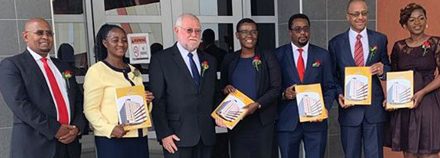
Less capacity, higher frequency, easier travel
The solution to more reliable public transport for Windhoek residents lies in limiting bus capacity but increasing the number of routes and the frequency of trips. The City’s public transport division argues that a more frequent service will relieve the current congestion during peak periods, both in the morning and in the afternoon.
The City of Windhoek together with its stakeholders officially launched the Move Windhoek Campaign last week. This campaign is the first leg of the Sustainable Urban Transport Master Plan (SUTMP) aimed to improve the transport needs of the people living in Windhoek. This means a modern and efficient bus service as well as non-motorised network such as pedestrians and cycling infrastructure will be implemented. At the launch, City officials showed off with a replica bus, indicating what the new buses will look like.
Clarence Rupingena, Manager: Public Transport, City of Windhoek confirmed to the Economist that the new buses will take less passengers but will run a denser schedule. “The new buses will take 60 passengers, 20 less than the old buses, which means that the sitting space is reduced and there will be more room for standing,” he emphasised adding that unlike the old buses the new buses will also accommodate people with disabilities, particularly those in wheelchairs.
“We are expecting at least 22 buses out of the total which is 26 by December, but our first line is operational, which runs from Monday to Saturday,” he said. He explained that Line One buses will depart from Katutura Post office to Siyanda, each bus returning half an hour later.
He added that the Saturday Shopping line will stay as is and the cost per trip is still N$5 with a smart card or N$6 when paying with cash.
“As the other buses arrive we will gradually integrate new lines, until the process is complete,” he said explaining that since the Plan started in 2012, they have predicted that by 2032, 20 years later, they would have completed it. Referring to the existing buses in the fleet, he said that these will continue to be part of the transport system but once the become unserviceable, will be retired.
In attendance at the launch where dignitaries that included Honourable Kilus Nguvauva, Deputy Minister of Works and Transport, who spoke on behalf of his minister, Hon Apheus !Naruseb, Honourable Sophia Shaningwa, Minister of Urban and Rural Development, H.E Mr Christian Matthias Schlaga, Ambassador of Germany and His Worship Muesee Kazapua, the Mayor of Windhoek, who all congratulated the City’s officials on the good work they are doing and helping to establish Windhoek’s transport system fit for a modern city in the 21st century.
The Ministries of Works and Transport, Urban and Rural Development and The City of Windhoek have formed a strong collaboration that will ensure that the envisaged steps are taken and the transport system for Windhoek, together with neighbouring Municipalities Okahandja and Rehoboth as well as the Hosea Kutako International Airport is improved. The German Government is also playing a critical role in the Master Plan by providing half of the funding, other resources and manpower to make sure that the Master Plan runs smoothly.











































